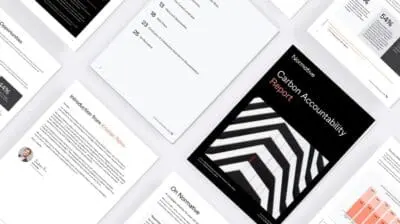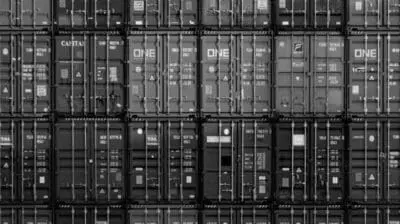Unintentional greenwashing: what it is & how to prevent it

Pairing good intentions with bad math can lead to unintentional greenwashing – and all its consequences.
You’ve probably heard about “greenwashing.” It’s a term scorned by environmental activists, and slung at some corporations who make sustainability claims.
But what is greenwashing, actually? How does it happen? And what happens to the businesses that do it – even when they do so unintentionally?
What is unintentional greenwashing?
Traditional greenwashing is defined as “disinformation disseminated by an organization so as to present an environmentally responsible public image.”
Put more simply, traditional greenwashing is fraud. An ethically-compromised organization tries to get the benefits of taking climate action – like increased attractiveness to employees, customers, and investors – without doing the work. And, like financial fraud, it can result in serious consequences.
This is the kind of greenwashing we’re used to hearing about. It’s intentional – and nefarious. But there’s another kind that afflicts businesses with good intentions: the unintentional kind.
With unintentional greenwashing, an organization believes that it’s being environmentally responsible, and communicates as such. But, unbeknownst to them, their environmental efforts are less effective or less comprehensive than they believe.
Unintentional greenwashing starts with incomplete data
Unintentional greenwashing often begins at the first step of an organization’s climate action: its carbon footprint calculation. Inaccurate calculations are one of the five most common greenwashing traps.
According to a 2021 survey from Boston Consulting Group, businesses have an average error rate of 30% to 40% in their emissions calculations. And any action based on incomplete information will have incomplete results.
Carbon accounting, explained
Carbon accounting empowers your business to achieve impactful and greenwashing-resistant carbon emissions reductions.
Read the article
What happens to businesses that unintentionally greenwash?
The consequences are the same as those for intentional greenwashing – and they can be severe.
To start, there are those ramifications that are easily quantifiable, like facing financial and legal action.
In recent years, companies who have been caught greenwashing have faced fines in the millions (USD), dropping share prices, lawsuits, and bans on advertising their products. And, in January 2023, the UK’s Competition and Markets Authority (CMA) announced it would scrutinize sustainability claims made by businesses to ensure they follow UK consumer protection law. If the CMA determines that businesses are making misleading sustainability claims, the Authority may take enforcement action.
Then there are other consequences that are harder to measure, but just as debilitating.
A business caught greenwashing will risk losing the trust of its investors and business partners.
And, at a time when customers care more than ever before about a business’s environmental responsibility – 90% of young consumers will pay more for sustainable products – businesses that are seen as cheating in their sustainability work will face instant and severe consumer reactions.
How can I prevent my business from unintentionally greenwashing?
Many businesses fall victim to unintentional greenwashing due to their good intentions and bad math. Therefore, the best way to make your business greenwashing-resistant is by making sure you get the math right.
To avoid the unreliability of internal or consultant-based manual calculatoions – not to mention the time investment required – businesses should turn to software-based carbon accounting.
Comprehensive carbon accounting can prevent greenwashing
Most often, the emissions that a company fails to calculate come from its value chain. These value chain emissions – also called scope 3 emissions – don’t originate within an organization’s own walls, and, as such, they’re notoriously difficult to track.
This leads to a common type of unintentional greenwashing: when businesses claim to be “carbon neutral” without factoring in their scope 3 emissions. Since scope 3 accounts for 92% of the average company’s carbon footprint, not addressing them leaves a very large gap in a company’s environmental efforts.
By empowering your business with a comprehensive and trustworthy overview of its carbon emissions, you ensure that you have the information you need to address your full climate impact.
Make your company greenwashing-resistant
Real, verifiable climate action begins with comprehensive calculation. Normative’s carbon accounting engine provides industry-leading accuracy across your full carbon footprint.











